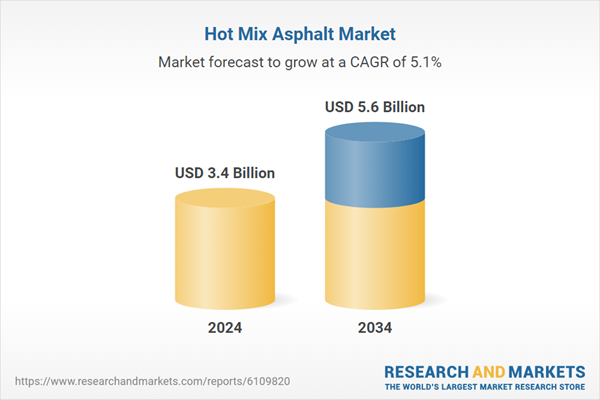Financial commitments toward urban development and transit systems, paired with regional initiatives aimed at expanding road connectivity, are intensifying the need for high-performance asphalt. As commercial and residential construction accelerates, HMA continues to serve as a vital component in large-scale civil projects. Moreover, the use of recycled asphalt pavement (RAP) and recycled asphalt shingles (RAS) is rising, helping producers limit the extraction of virgin materials. Eco-friendly asphalt products are gaining traction among companies looking to reduce emissions and meet circular economy objectives.
Dense-graded mixes segment represented 53.2% share in 2024. These mixes are widely favored due to their cost-efficiency, durability, and versatility in use across main roads, secondary routes, and large parking areas. Asphalt’s reliability makes it a preferred choice for both new road construction and resurfacing applications. Stone Matrix Asphalt, on the other hand, is often deployed in high-traffic environments where durability and resistance to rutting are essential, especially in regions with varying climate conditions and heavy vehicle loads.
Aggregates segment held 47.2% share in 2024. Virgin aggregates remain the top choice due to their strength, consistency, and widespread availability. However, the trend toward sustainability is pushing the increased use of recycled materials such as construction waste and demolition debris. Alternative aggregate options, including crushed glass and steel slag, are being gradually adopted, particularly in markets that have introduced green building codes and environmental compliance requirements.
China Hot Mix Asphalt Market generated USD 1.08 billion in 2024. The country maintains a strong lead thanks to its extensive infrastructure base and continual upgrades to roadways and city transportation systems. Through national development plans, substantial investments have been made in expressways and urban transit, leading to consistent consumption of asphalt-based materials. Backed by large-scale public projects and expanding industrial zones, the demand for hot-mix asphalt remains high across multiple sectors.
The Global Hot Mix Asphalt Market remains highly competitive, with key players such as Vulcan Materials Company, Eurovia (VINCI Group), Martin Marietta Materials, Colas Group, and CRH plc holding considerable market share. Leading companies in the hot mix asphalt sector are prioritizing sustainability, innovation, and supply chain integration to secure long-term growth. They are investing in advanced recycling technologies to incorporate higher percentages of RAP and RAS into their mixes without compromising quality. Strategic collaborations with government bodies and construction contractors are helping secure long-term supply contracts for infrastructure projects. Expanding manufacturing capacity and regional footprint is another major focus, allowing faster delivery and greater market responsiveness.
Comprehensive Market Analysis and Forecast
- Industry trends, key growth drivers, challenges, future opportunities, and regulatory landscape
- Competitive landscape with Porter’s Five Forces and PESTEL analysis
- Market size, segmentation, and regional forecasts
- In-depth company profiles, business strategies, financial insights, and SWOT analysis
This product will be delivered within 2-4 business days.
Table of Contents
Companies Mentioned
- Astec Industries, Inc
- BASF SE
- BP p.l.c.
- Colas Group
- CRH plc
- Eurovia (VINCI Group)
- Exxon Mobil Corporation
- Granite Construction Incorporated
- Heidelberg Materials (formerly HeidelbergCement AG)
- Holcim Ltd
- Ingevity Corporation
- Kraton Corporation (DL Chemical)
- Martin Marietta Materials, Inc
- Owens Corning
- Shell plc
- TotalEnergies SE
- Vulcan Materials Company
- Wirtgen Group (John Deere)
Table Information
| Report Attribute | Details |
|---|---|
| No. of Pages | 220 |
| Published | June 2025 |
| Forecast Period | 2024 - 2034 |
| Estimated Market Value ( USD | $ 3.4 Billion |
| Forecasted Market Value ( USD | $ 5.6 Billion |
| Compound Annual Growth Rate | 5.1% |
| Regions Covered | Global |
| No. of Companies Mentioned | 18 |









